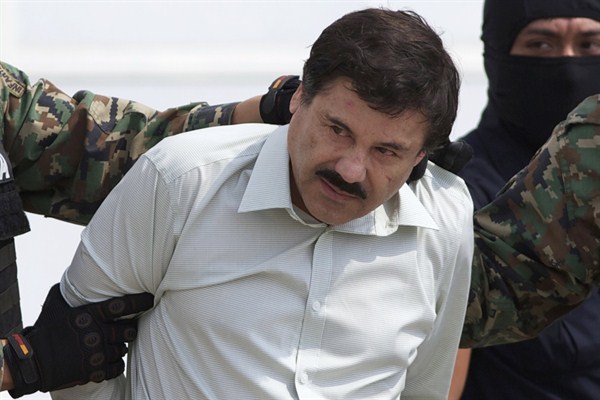In a scene reminiscent of a Hollywood movie, Mexican drug lord Joaquin “El Chapo” Guzman escaped last week from a maximum-security prison that was allegedly Mexico’s most secure. On the evening of July 11, he apparently climbed down through a two-by-two-foot hole underneath his cell’s shower, only to reappear above ground at the end of a mile-long tunnel, in a bare building under construction. Ominously, one of his sons had reportedly tweeted a few days prior, “All things come to those who wait,” while several “narcocorridos,” or popular drug ballads, had predicted El Chapo’s prison break.
Eighteen months after having been recaptured, and 13 years after his previous escape from his prison—that time in a laundry cart—Guzman is on the run again. What does it mean for the Sinaloa cartel that he led, for Enrique Pena Nieto’s faltering presidency and security strategy against the cartels, and for Mexico’s relations with the United States?
Last month, Tomas Zeron, director of the Criminal Investigation Agency (AIC) within Mexico’s Attorney General Office, noted in an interview that there are only two drug cartels “operating and functioning” in Mexico. The claim is highly debatable and was understandably criticized by many analysts. But the two cartels Zeron had in mind were the Jalisco Cartel New Generation (CJNG), whose rise has taken the government by surprise, and the Sinaloa cartel.

